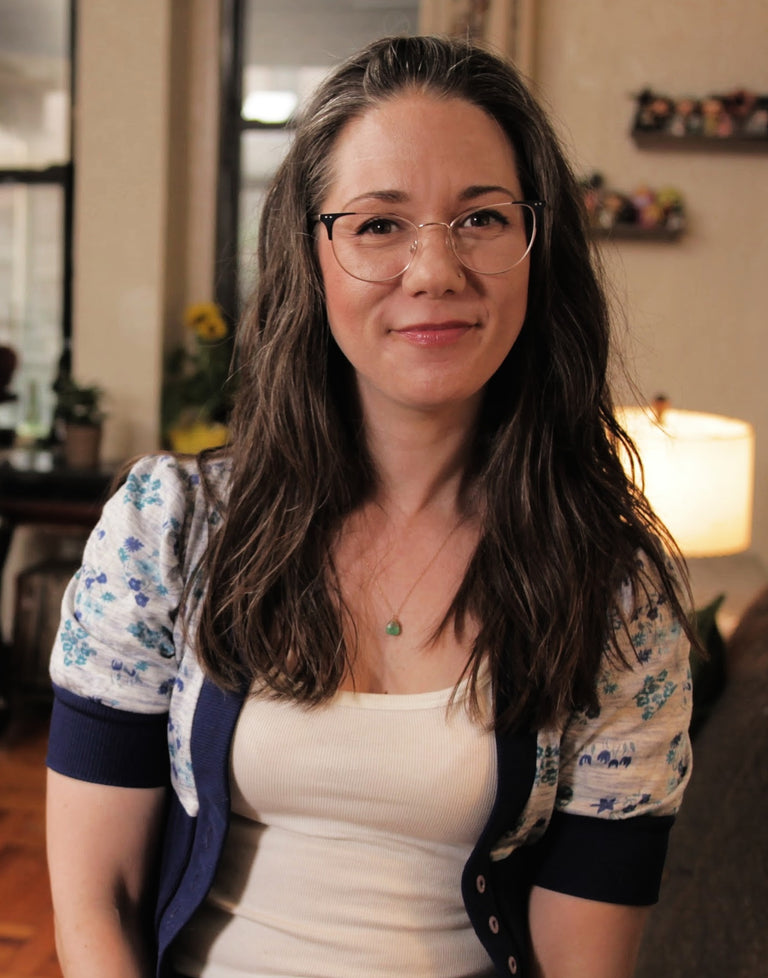There are many different forms of hair loss, and the potential underlying causes are even more varied. One umbrella that hair loss could fall under is “diffuse hair loss,” which happens when hair over the entire scalp thins or is lost.
What causes diffuse hair loss? How is it treated? Can it be prevented? Read on to better understand what diffuse hair loss is, along with what products you should use to help you combat hair loss ASAP.
So What Is Diffuse Hair Loss, Exactly?
Hair loss affects 50% of men and women at some point in their lives, making it a fairly common experience. There are also many different ways to think about and categorize hair loss and shedding.
Diffuse and focal are two broad umbrellas that are often used to distinguish between different forms of loss and shedding. With focal hair loss, the affected parts of the scalp are focused and specific, whereas, with diffuse hair loss, you’ll see the loss spread out over the entire scalp.
Shop: GRO Collection for Thinning Hair
Common Signs of Diffuse Hair Loss
Depending on the underlying cause, diffuse hair loss could come on quite suddenly or develop gradually over time
If you think you might be experiencing this type of hair loss, here are a few common signs to look out for:
- Increased Shedding: Noticeably more loose hairs on clothing, in the shower drain or in your fingers when running your hands through your hair.
- Reduced Density: Your hair just looks and feels thinner. You may notice your ponytail feels thinner than it used to.
- Visible Scalp: Your part might be wider than it used to be, or you may see more scalp than you used to when sectioning hair.
If you’ve noticed changes to your hair density but don’t see specific areas of your scalp affected, you could be dealing with diffuse hair loss.
Shop: Juli Bauer Roth's Top VEGAMOUR Picks
What Causes Diffuse Hair Loss?
Diffuse hair loss can happen for many different reasons. Genetics, medications, hormonal imbalances, illness or ongoing medical conditions and even nutrition could contribute to or cause diffuse hair thinning. “Often, multiple factors contribute to the condition,” said Dr. Harikiran Chekuri, a medical doctor specializing in hair loss at Clinic Spots.
These are a few of the most common causes of diffuse thinning.
Telogen Effluvium
Telogen effluvium is the most common cause of diffuse hair loss among women and probably the most common cause of diffuse thinning. Thankfully, it is most often a temporary condition.
With TE, excessive hair shedding comes on suddenly and happens when a stressor (a change, imbalance or shock) causes a significant number of hair follicles to move prematurely into the resting phase (telogen phase) of the growth cycle. About three months later, excessive shedding begins. Telogen effluvium typically resolves on its own though chronic telogen effluvium is possible.
Common triggers for TE can include:
- Hormonal Changes: Giving birth, starting or stopping birth control, menopause or other changes
- Extreme Stress: Losing a loved one or job, moving or other major psychological stressors
- Illness: Severe illness like the flu or COVID-19, especially when accompanied by a high fever
- Weight Loss: Intense dieting and drastic weight loss
- Medical Conditions: Thyroid disease, autoimmune conditions, endocrine disorders and a variety of other medical conditions
- Medications: Starting or stopping a medication
Get the Full Scoop: Telogen Effluvium Explained
Anagen Effluvium
Like telogen effluvium, anagen effluvium is a form of hair loss tied to a disruption of the regular hair growth cycle, though in the case of anagen effluvium, the disruption happens in the active growth phase (anagen phase) of the cycle and causes anagen hairs to fall out.
Chemotherapy treatments are the most common cause of AE, and it typically causes complete baldness of the scalp and possible loss of body hair in a short period of several weeks to a few months. For the majority of chemotherapy patients, their hair begins to regrow once they stop treatment. Clinical research shows that scalp hypothermia (also called scalp cooling) can reduce hair loss from chemotherapy.
More: What Is Anagen Effluvium?
Androgenetic Alopecia
Androgenetic alopecia is a common form of hair loss in both men and women, and it is commonly referred to as:
- Male pattern hair loss
- Female pattern hair loss
- Male pattern baldness
- Female pattern baldness
As the names might suggest, hair loss caused by AGA typically follows a pattern. In women, diffuse thinning of the hair in the crown region occurs, while in men, bitemporal recession and diffuse thinning at the vertex occurs. This common hair loss condition is caused by a genetic predisposition that makes hair follicles especially sensitive to a group of hormones called androgens. Over time androgens weaken the hair follicle, eventually leading to permanent hair loss.
Read: Everything You Need to Know About AA
Diffuse Alopecia Areata
Alopecia areata is a hair loss condition that happens when the immune system mistakenly attacks hair follicles. And while AA usually causes focal patchy hair loss, there is a form of AA that can cause diffuse hair loss.
Since diffuse alopecia areata (DAA) is a less common case, and because it can look like AGA or TE, this condition can be misdiagnosed. In some cases, patients may have both DAA and AGA. The good news is that DAA is often temporary, and hair growth may return to normal.
Uncover: Diffuse Alopecia Areata Explained
Alopecia Areata Incognita
Alopecia areata incognita (AAI) is similar to diffuse alopecia areata in that they both cause diffuse hair loss, though AAI typically develops more quickly than DAA over the course of a few weeks. It, too, can be misdiagnosed as AGA or TE and may happen alongside AGA.
Since these two variants of alopecia areata are so similar, doctors often perform microscopic analyses of the scalp to properly distinguish between them. AAI tends to be more common among young women between 20 and 40 years old, who account for about 86% of cases.
Other Medical Conditions
A variety of other medical conditions could impact hair follicles leading to hair shedding, thinning hair or hair loss. Iron deficiencies and thyroid disorders are two of the most common conditions leading to diffuse hair loss, though autoimmune conditions like lupus, insulin resistance and diabetes, or inflammatory bowel conditions might also be the culprits.
Related: 7 Autoimmune Diseases That Might Cause Hair Loss
How Is Diffuse Hair Loss Diagnosed and Treated?
If you’re seeing noticeable changes in your hair, see your primary doctor or a dermatologist.
“We must find the cause of the diffuse hair loss to treat it,” said Dr. Sanusi Umar, a board-certified dermatologist who specializes in hair loss.
Aside from asking you a variety of questions about your general health and medical history, they will also perform a physical exam and conduct tests to figure out what’s going on. These are some of the tools your doctor may employ in making a diagnosis:
- Scalp Exam: A physical examination of your scalp.
- Blood Tests: These can help pinpoint imbalances, deficiencies or medical conditions that could be the cause of your hair loss.
- Hair Pull Test: The doctor may grasp and pull a small section of hair to see how many come loose.
- Trichogram: A trichogram inspects a sample of hair under a microscope to evaluate your hair strand’s health and growth.
- Scalp Biopsy: A small part of your scalp is removed and examined to evaluate your hair follicle function.
Hair loss treatments will be tailored to the underlying cause of the loss. “There are treatments available for all the different types of diffuse hair loss,” said Dr. Cheryl Rosen, a board-certified dermatologist and founder of BowTied Life. “With the help of a qualified medical team, you can develop a treatment plan that will help you keep your hair healthy.”
With telogen effluvium, for example, hair shedding often stops and resolves on its own without specific treatment. Other conditions, like alopecia areata, may require medications to treat the underlying medical concern.
Androgenetic alopecia is often treated with medications like topical minoxidil or oral finasteride. Regardless of the cause, once your doctor understands the root issue, he or she can work with you to develop a hair loss treatment plan.
In addition to medical treatment, there are more cosmetic options available like scalp pigmentation, low-level laser therapy or hair transplantation surgery that might help as well.
Can Diffuse Hair Loss Be Prevented?
Some forms of diffuse hair loss and thinning cannot be prevented, but there are ways to ensure you’re taking good care of your general and scalp health.
“The best way to prevent diffuse hair loss is by taking care of your overall health and nutrition,” said Amr Salem, a scalp micropigmentation specialist with INKredible Scalp. With that in mind, here are some tips to support your body in healthy hair regrowth:
- Be Gentle: Follicles can get stressed out with excessive chemical treatments and heat styling or by regularly sporting tight hairstyles.
- Eat Right: A balanced and healthy diet is the best way to prevent shedding caused by vitamin deficiencies. Adding biotin supplements to your routine might help ensure you get adequate hair-friendly vitamins and minerals.
- Reduce Stress: Stress can be seriously bad news for your general health and your follicles. Aside from stress management techniques like meditation, regular exercise and good sleep habits can help reduce stress levels, too.
- Improve Hair Care: Check your hair care products for potentially toxic or irritating ingredients, and opt for more natural options designed for hair wellness. Add a hair serum to your routine to help boost visible density and decrease signs of shedding.
The Takeaway
If you’re noticing increased shedding or thinning that is spread evenly across your scalp, it could be a form of diffuse hair loss. Diffuse hair loss can be caused by a variety of triggers or underlying causes, so if you’re seeing more shedding or your hair feels thinner, see a doctor. Taking steps like eating a healthy diet, exercising regularly and adjusting your hair care routines can help support follicles from the inside out.
#include-related-slider#
More From VEGAMOUR
- Shop: Hair Products for Thinning Hair
- How to Regain Hair Loss From Stress
- These Medications Might Cause Hair Loss
Photo credit: Darya Ogurtsova/UnSplash
Back




















